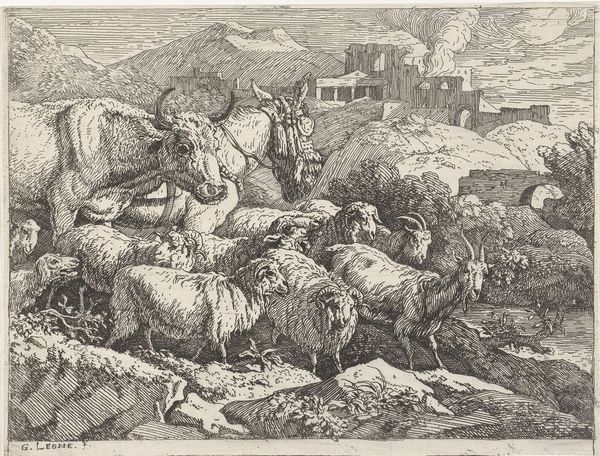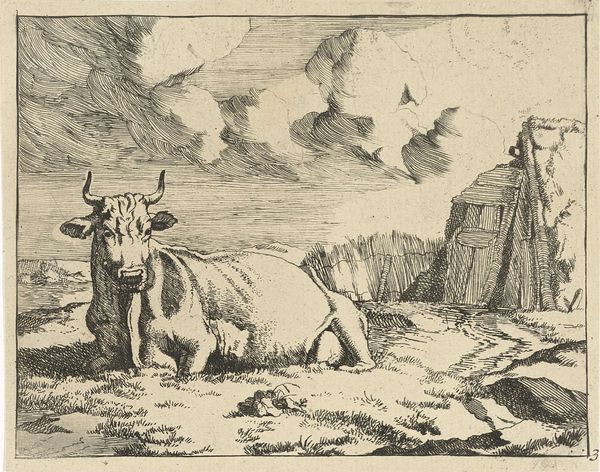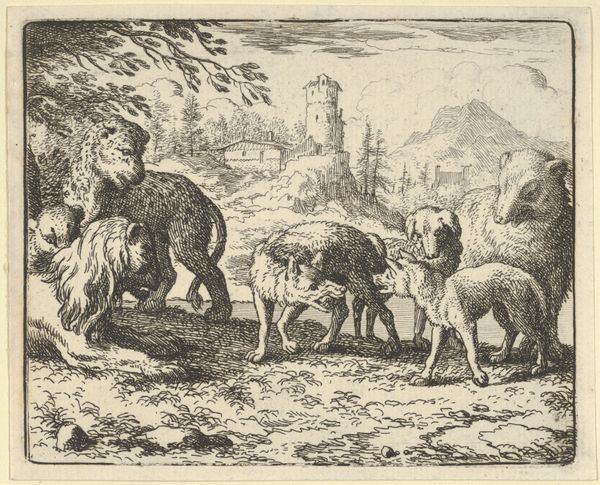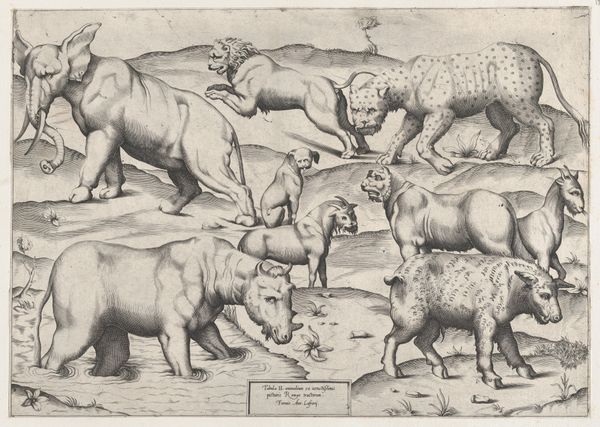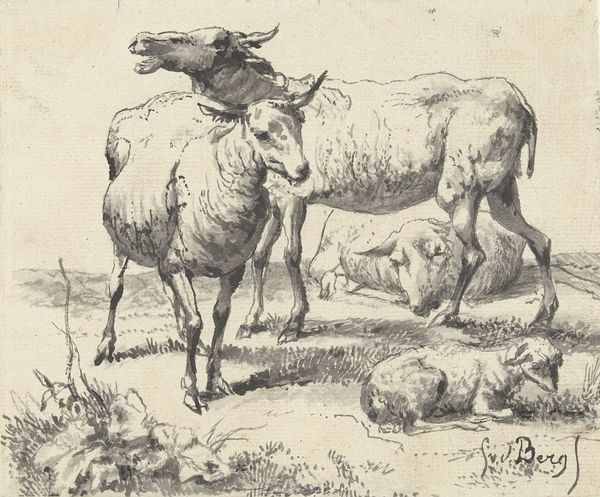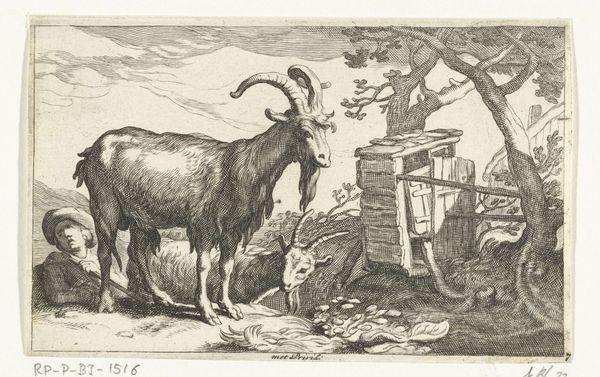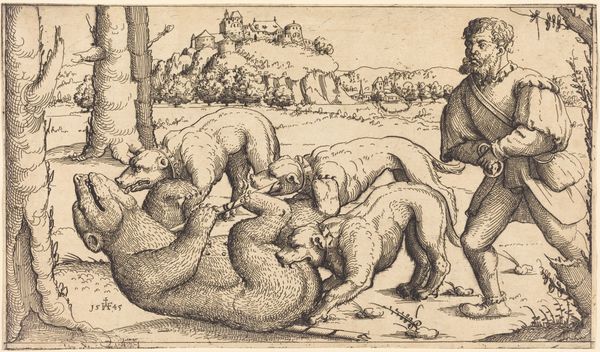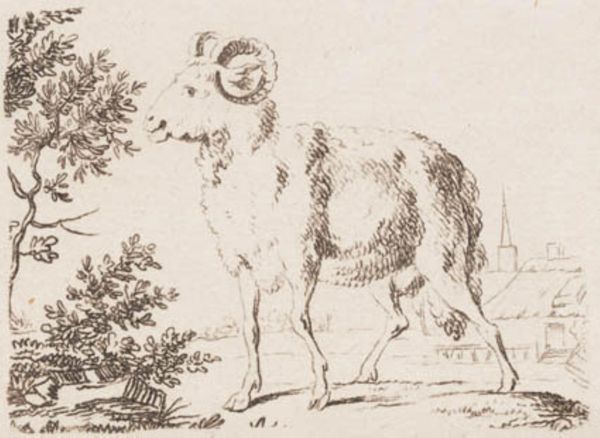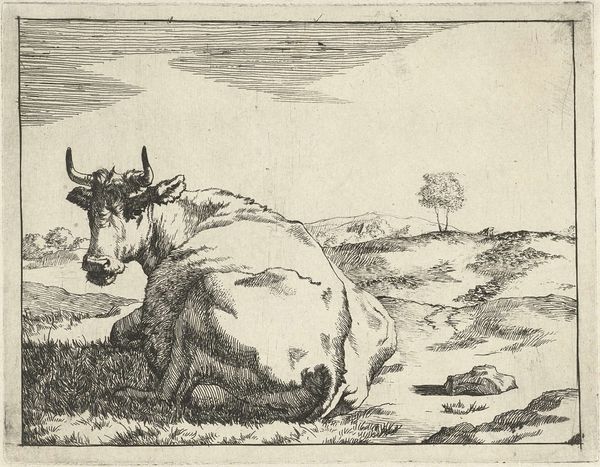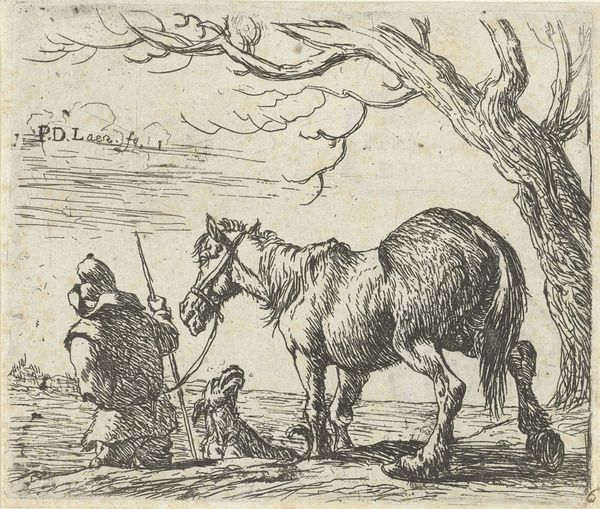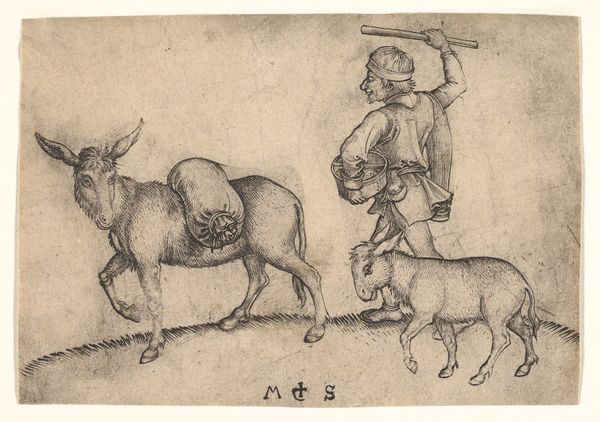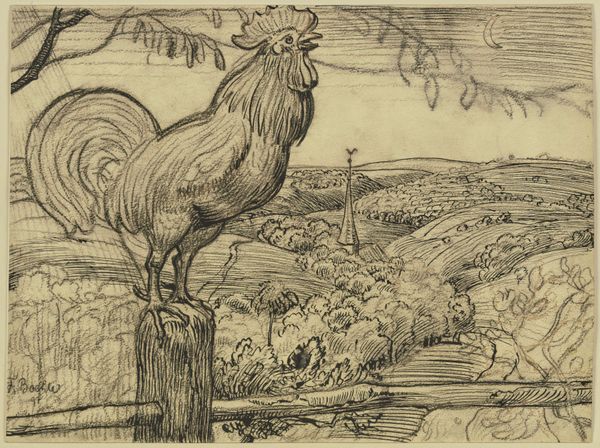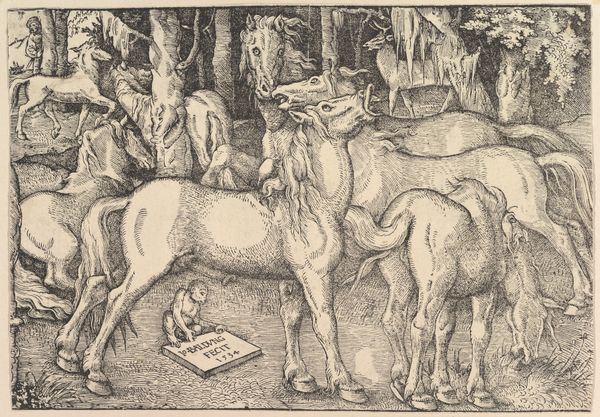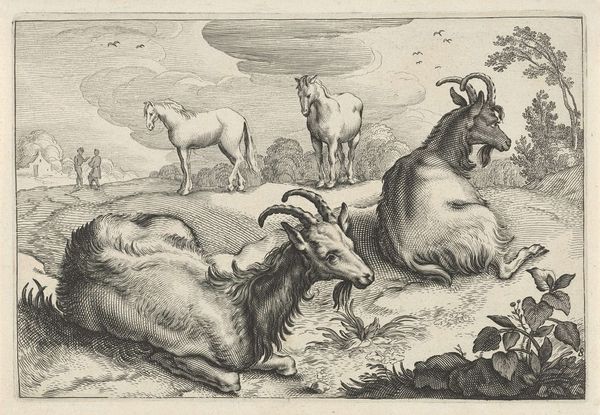
print, engraving
#
animal
# print
#
pencil sketch
#
landscape
#
figuration
#
line
#
northern-renaissance
#
engraving
#
realism
Copyright: Public domain
Editor: Here we have Albrecht Dürer's "Monstrous Hog of Landser," created in 1496 using engraving. It's... unusual. The hog is realistically rendered, yet undeniably monstrous. How should we interpret this work? Curator: Consider the context. Engraving wasn’t just art; it was a means of mass production. Dürer's skill wasn't only artistic; it was tied to the labor of printing, allowing images like this to circulate widely. It is interesting to ask why this particular image was made. Editor: So, it's less about the hog itself, and more about how Dürer leveraged printmaking to disseminate it? But why a "monstrous" hog? Curator: "Monstrous" speaks to a social anxiety, perhaps about peasant uprisings, which often involved the destruction of property, as indicated by Landser’s etymology. Notice how the fine lines create texture, a simulacrum of reality easily reproduced for consumption by a diverse audience. Dürer's labor created both art and commodity. What do you think about the relation between form and context here? Editor: That's fascinating. The level of detail, combined with the unsettling subject matter, makes you think about the message's purpose. Was it meant to scare, warn, or simply document? And how did access to printmaking shift artistic expression? Curator: Exactly. Printmaking collapses boundaries between artist, artisan, and entrepreneur, forcing us to rethink traditional definitions of "art" through the lens of production and dissemination. And this impacts the type of message delivered to its new broader audience. Editor: I hadn't considered that interplay of social context and material process before. It adds a whole new dimension to understanding the print. Thanks! Curator: Indeed. It prompts us to look beyond the aesthetic and question the role of art within the broader socioeconomic landscape.
Comments
No comments
Be the first to comment and join the conversation on the ultimate creative platform.
